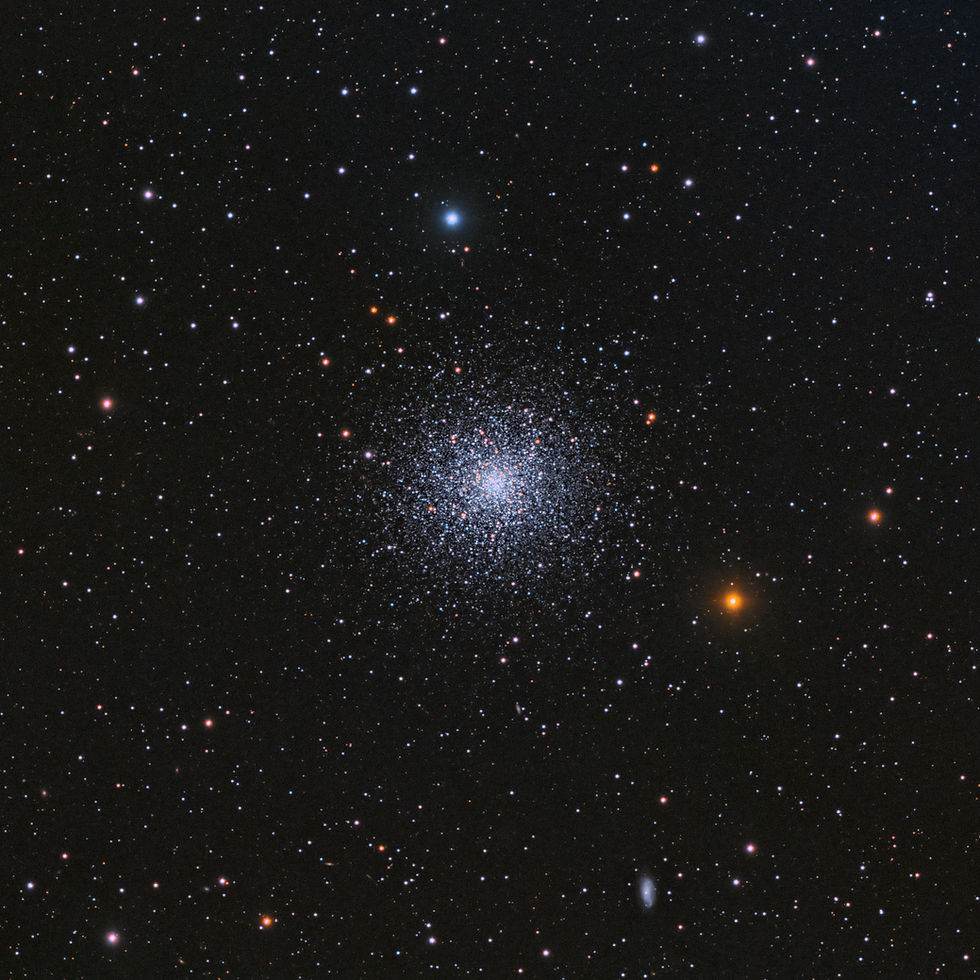The great globular cluster
- Ville Puoskari

- Mar 23, 2021
- 1 min read
Messier 13 was found by English astronomer Edmond Halley in 1714 and catalogued by Charles Messier 50 years later in his famous catalog of Messier objects. Messier was convinced that this object did not contain any stars, as it appered in his telescope as a blurry spherical smudge. Because stars in Messier 13 are so densely packed together the cluster wasn't resolved until 1779 as larger and optically better telescopes became available. Also an interstellar messege was sent to this particular cluster from Arecibo radio telescope in 1974 that contained information about humans, Earth's position, atomic numbers and other information. However this wasn't a serious attempt to reach out for extraterrestial life, it was more of an demonstration of technology. The messege is still on it's way and could reach the cluster in 25 000 years or so. Messier 13 consists of several hundred thousand stars and it is ~145 light-years in diameter. Its so densely populated with stars that sometimes they merge into new ones. These are called “blue stragglers” and they appear to be younger than the other stars in their vicinity. This phenomena is of great interest to astronomical research.




Comments